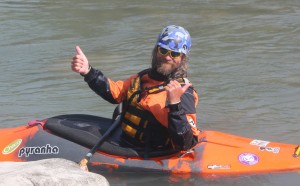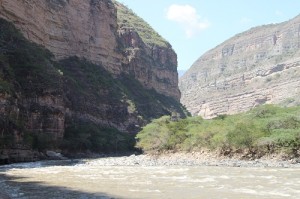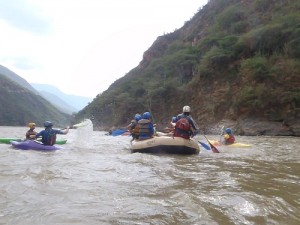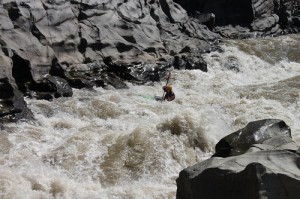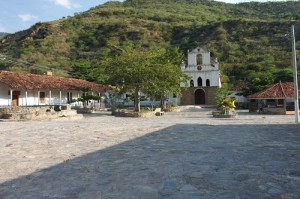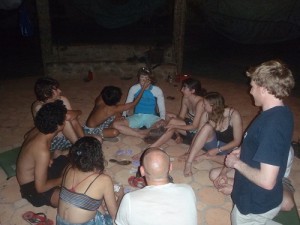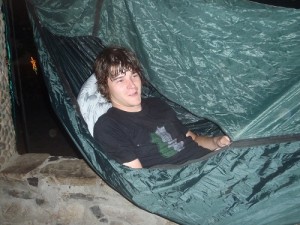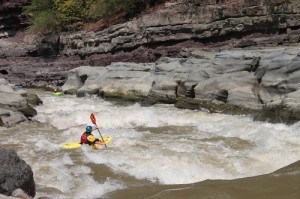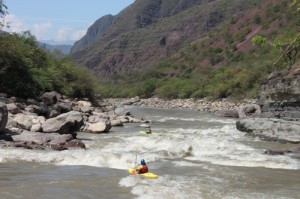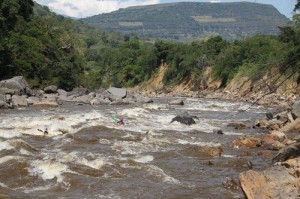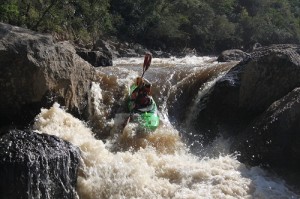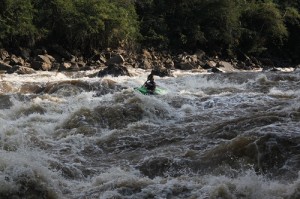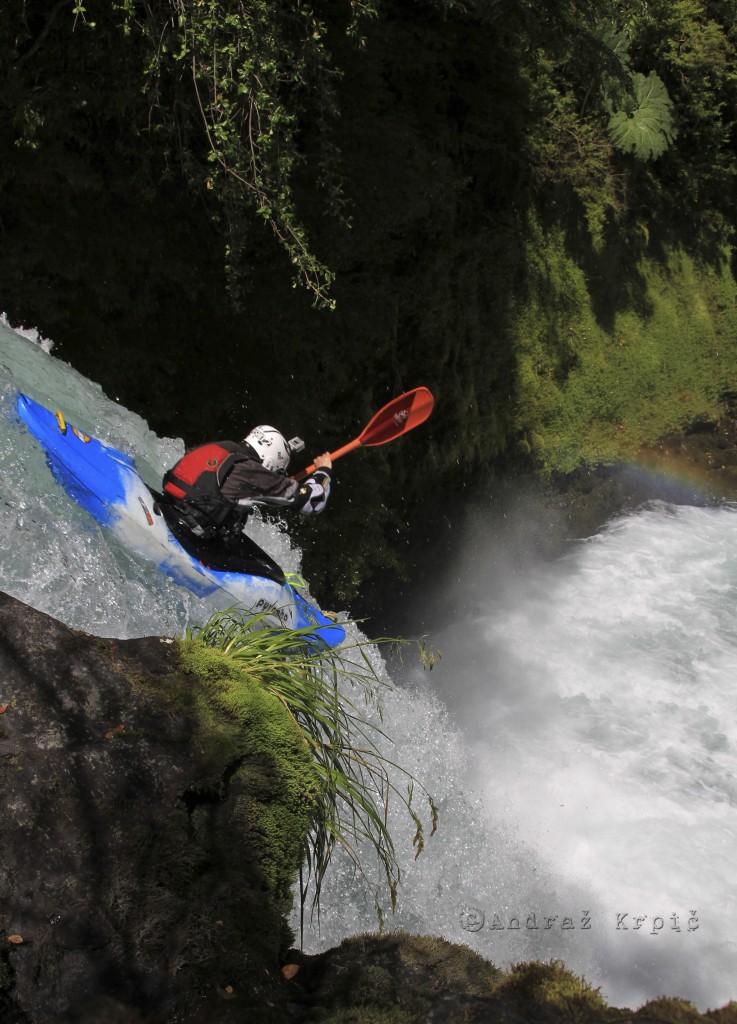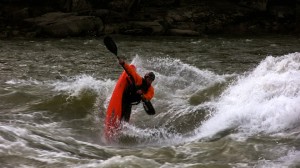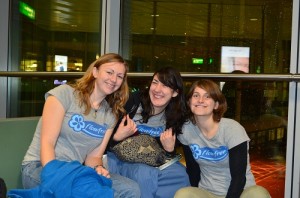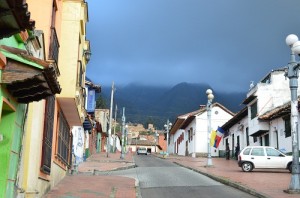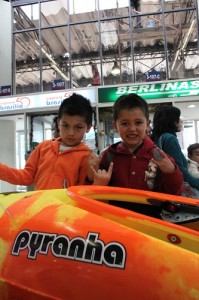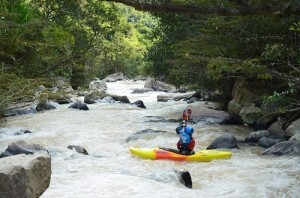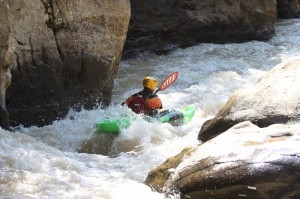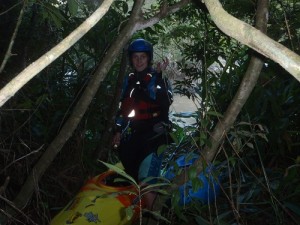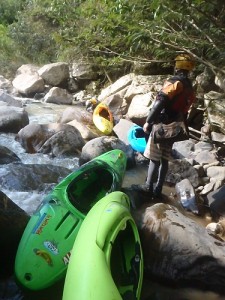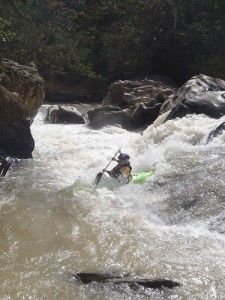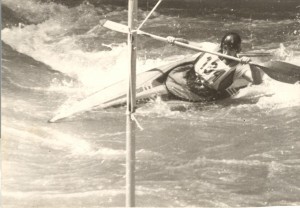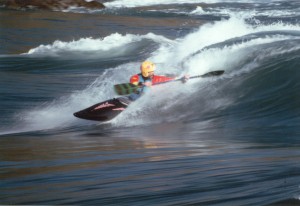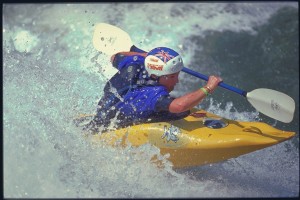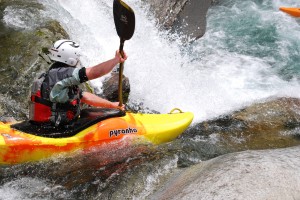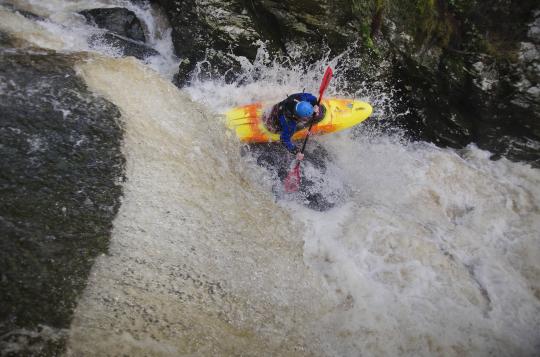During winter’s stern grip, UK paddlers daydream with plans for their summer sojourn to warmer climes to escape the gloom. Fear not, for there is something more practical you can do to escape during these dark months than braving your local run in the snow.  An old guidebook in the dark recesses of Pete Cornes’ bookshelf gave a glimmer of warm January sunshine, granite waterfalls and cheap port, all only a (long) ferry away from Portsmouth. Galicia!
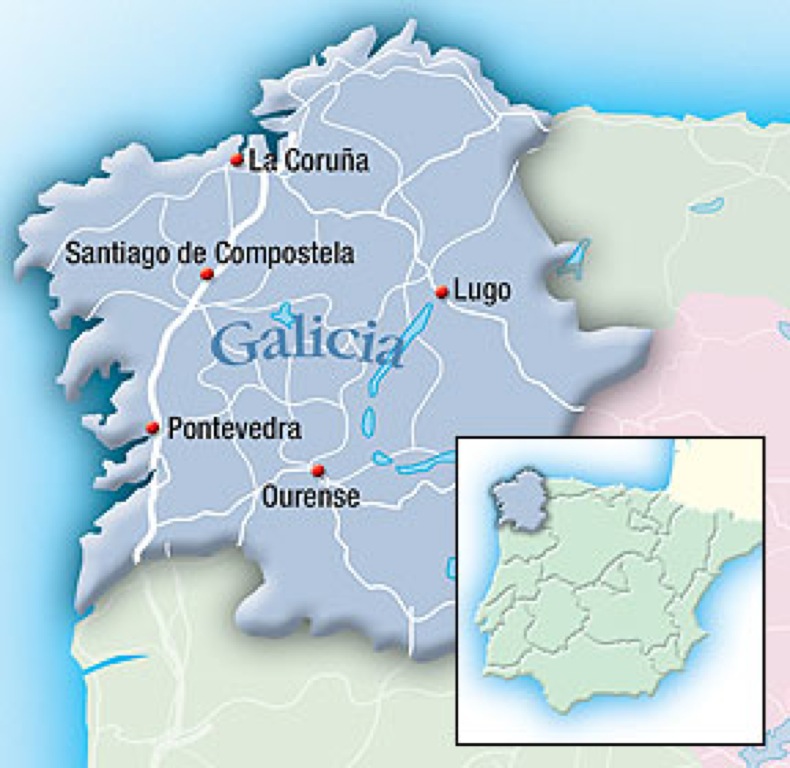
The Galicia Region
Armed with the Pyranha Team Van, Pete, Pete, Adam, Dan, Tom & Chris headed to Galicia with a special mission from Pyranha HQ. Here is a collection of our top tips for getting yourself over there.
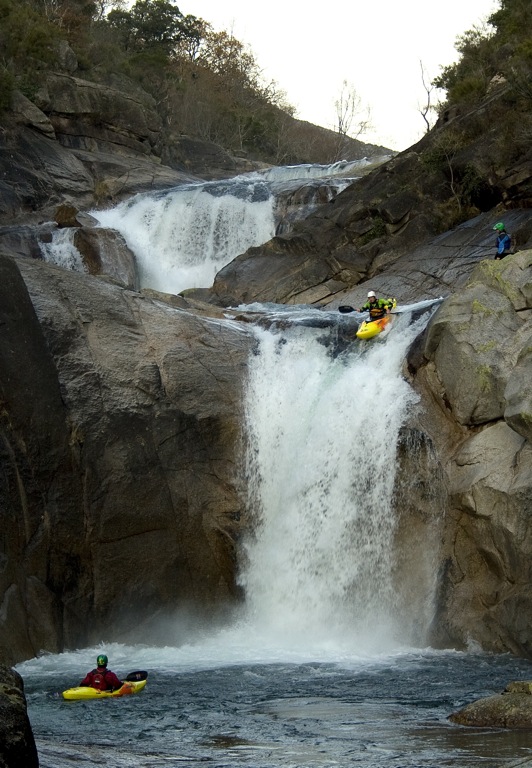
Pete Woods & Chris Eastabrook, Number 3, Castro Laboreiro, Photo by Adam Dumolo
Research
The rivers are largely rain fed, so to get the best from the area you need bad weather. Rivers hold their water well, so even without rain there are options for steep creeking. Given the mountainous nature of the region and the large ocean close to hand, weather fronts are never far away, but the best conditions are generally found from November to March.
There is a guidebook for the region but it is in French and Spanish, so not a lot of use, and numerous blogs & websites with plenty of information. We gained the most information from getting in contact with local paddlers, who are always extremely keen to show off their local run & often extend their hospitality far past the access & egress information.
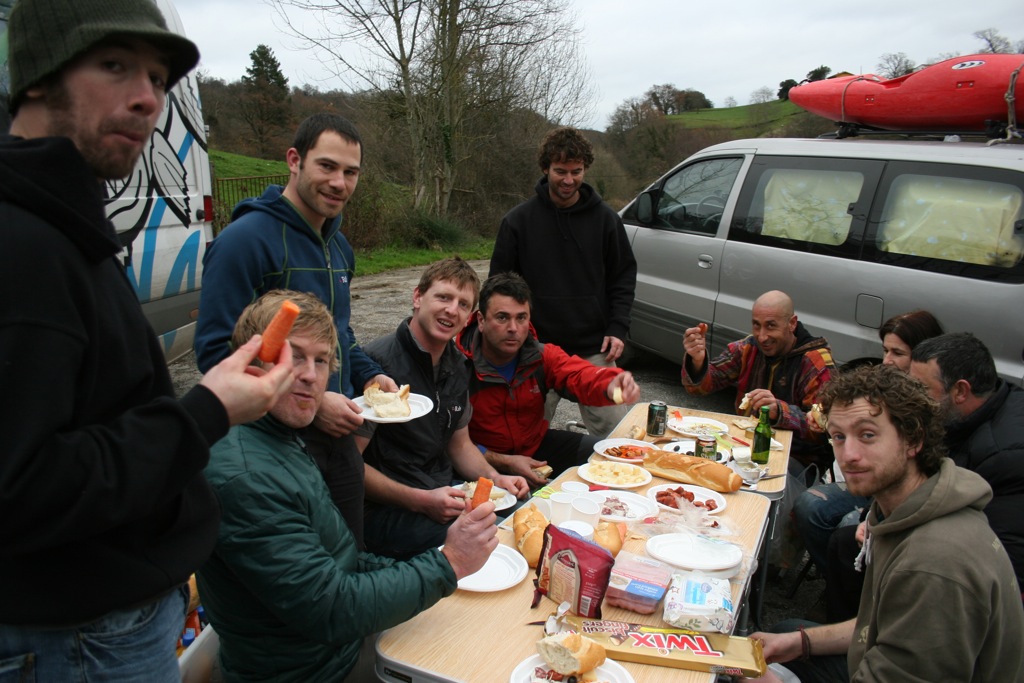
The hospitality of the locals is amazing. Photo by Adam Dumolo
Transport
Pricing up all the options the long ferry from Portsmouth to Santander was the cheapest option. Flying into Porto and hiring a car would save time but you then miss out on all the fun of the ferry. I can’t see any fun or cost savings from driving all the way through France unless you want to stop in Andorra for a skiing trip or something.
Getting About
Good maps of this region seem to be hard to find. Luckily Petes’ sat nav really saved the day, as the road network in the rural areas can be a total maze. Some of the shuttles are a total hassle so if you only have one car then try to hook up with other boaters or the locals. They also know the way!
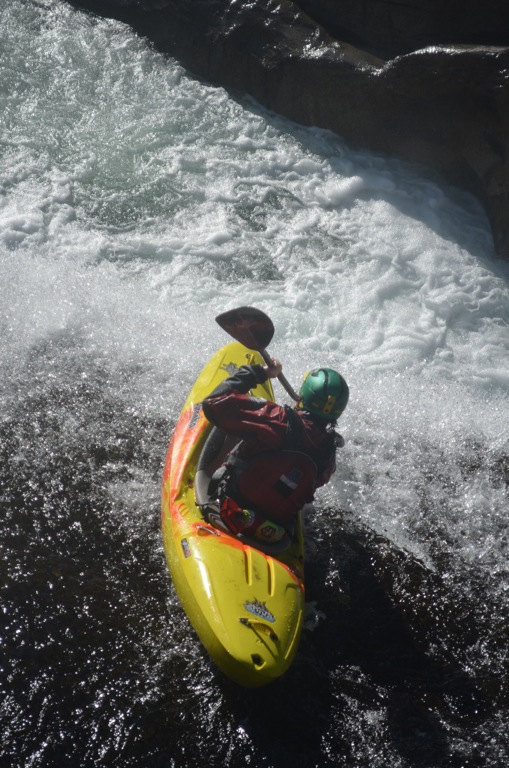
Chris Eastabrook, Section 1 Castro Laboreiro. Photo by Pete Firth
Paddling
Take a hefty pair of river shoes. This is Granite – slippery when wet! Some of the rivers have fairly stout portages and scouting rapids often involves wandering around on smooth, featureless rock where you wouldn’t want to slip.
The higher-grade rivers will all require proficiency with ropework, a willingness to make some blind jumps for the portages, and a sense of adventure.
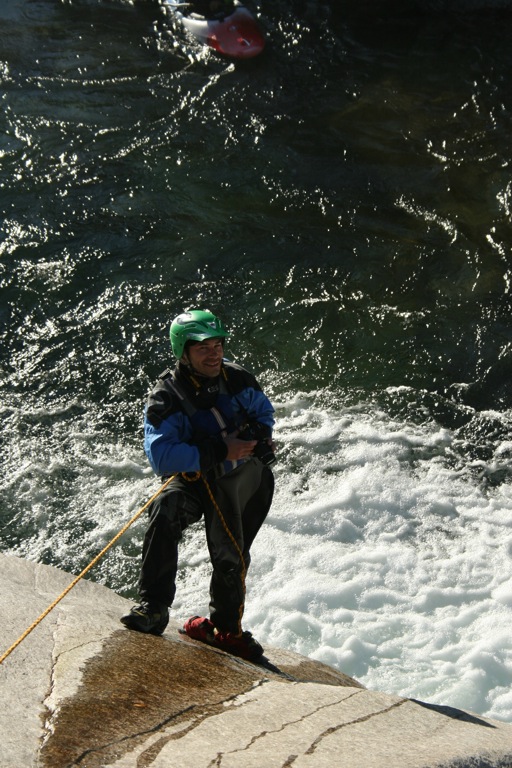
Pete Firth showing you sometimes need more than solid boots to get the shot. Photo Adam Dumolo
Eating
Every small café/bar has some food on offer; we generally went for a Spanish omelette for breakfast, bread and cheese for lunch and either camp cuisine or a meal out for the evenings.  Food and drink in Portugal appeared to be cheaper than Spain in general, but the difference was mainly negligible, with espresso at under a Euro, and beer at under 2 Euros in both countries.
The best value eating out was to be found by looking for signs pronouncing ‘menu del dia’ (menu of the day) – normally for about 10 euros. This is a few courses of excellent food, often including drink – be aware that this offer normally stops by 4pm or so (although we had no problems in finding evening menus for only a couple of euros more expensive).
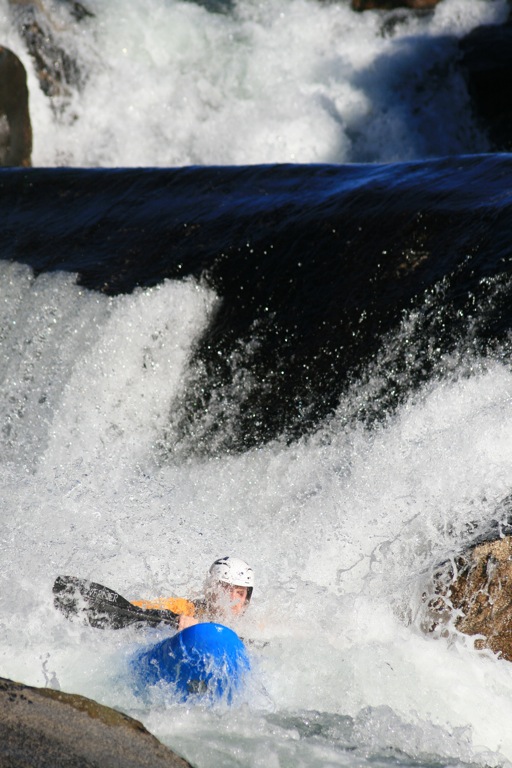
Adam Dumolo, Section 1, Castro Laborerio. Photo By Dan Butler
Sleeping
Discreet wild camping gave us no problems at all, and we found several perfect areas. There are many sheltered spaces along pilgrim trails that appeared unused while we were there and they would have been ideal if there had been any ‘weather’. If you do plan to camp then ensure you take a warm sleeping bag, as temperatures were below 0oC every night.
It is possible to rent a house for around 50 Euros a night for 6 people to share. The problem with this is that you are then tied to one area and can potentially end up with long drives to and from the rivers, depending on water levels.
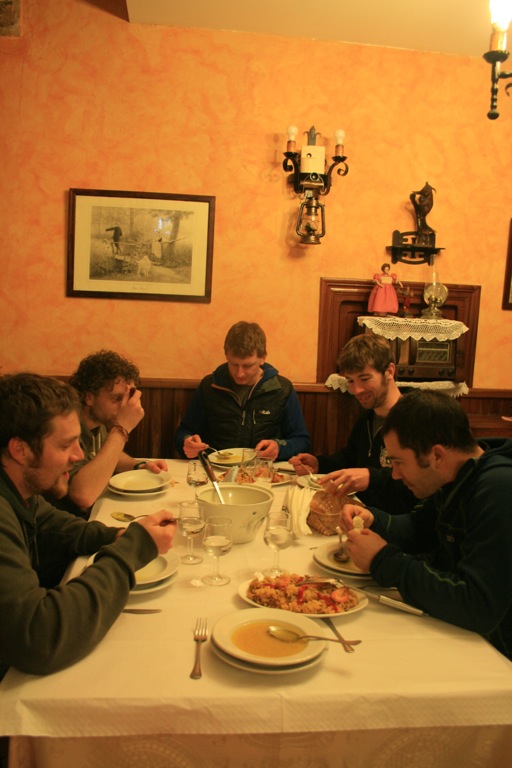
Menu de Dia, Photo by Pete Woods
One of the most famous rivers in the region is the Castro Laboriero, with two excellent sections of whitewater – as it doesn’t appear in the guidebook here are some photos to whet your appetite and our river notes to kick start your research;
Section 1:Â Grade 4/5, includes a few excellent granite bedrock drops and an exciting portage. Maybe around 6km.
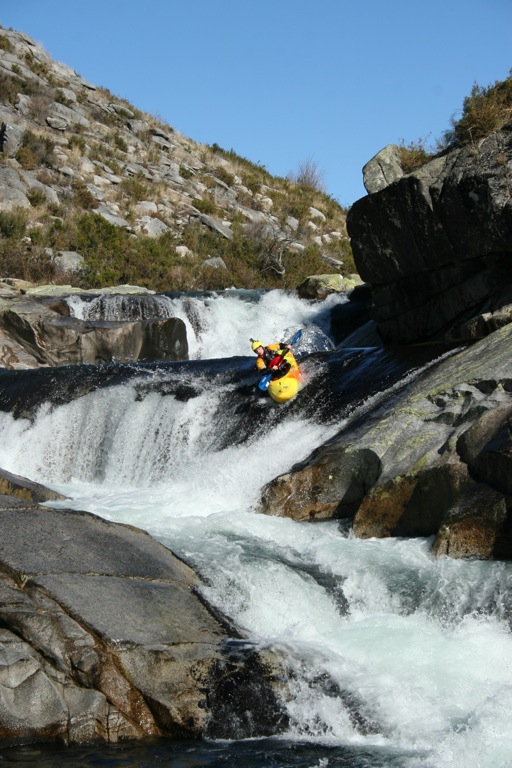
Dan Butler, Section 1, Castro Laborerio. Photo by Adam Dumolo
Access at the road bridge reached by turning right when heading away from the village of Castro Laboriero, in the hamlet immediately before the Spanish border is reached roughly 4km south of Castro Laboriero. [41.985669, -8.163614 – copy this lat/long into google maps for a visual location]
To reach the take out for section 1: Continue over the bridge and follow the road to the right. At the first junction after this turn right, then at the next junction turn left. Drive for a long time (25 mins?). When you head downhill into a village turn left to reach the river [41.950283, -8.184755] (don’t take anything larger than a small van all the way to the river…)
A few km of boulder rapids lead into the bedrock drops and slides, with one large and ugly slide requiring a longish portage (get ready to make the leap of faith) which is followed by another few km of grade 3/4 boulder rapids.
Section 2
Grade 5, with the famous triple step waterfall section (and one extremely arduous portage). about 5km.
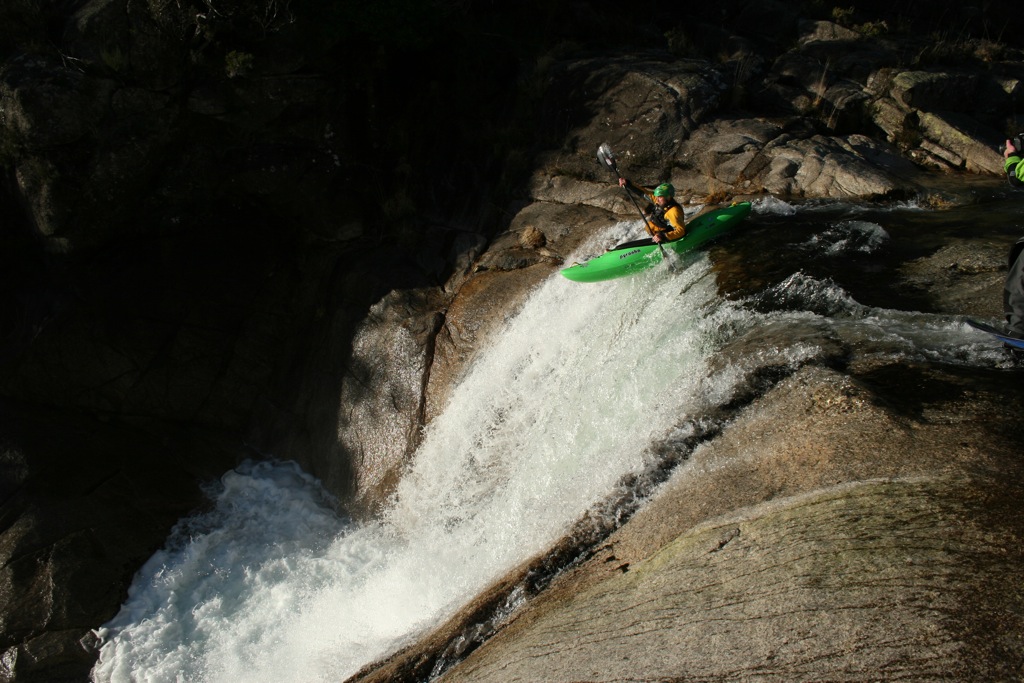
Tom Parker on the first of three. Section 2, Castro Laboreiro. Photo by Adam Dumolo
Access at the take out for section 1. Egress by driving for many miles to a point north of a small hamlet called Olelas, just on the border between Spain and Portugal. [41.923475, -8.209426]
Starting into a steeper section of boulder rapids give a warm up for what is to come – one of the most famous runs in Galicia. After a few km the valley sides steepen and the triple step rapid is in front of you. Depending on water level the lines vary, but each drop goes – be sure to arrive early to make the most of the light in this spectacular place.
After the third fall take out on river left and find your way up to the very top of the rocky promontory (about 80m of ascent), then follow the track (when found) back down to the river (It is also possible to walk into the start of the waterfall section from the egress point by following this path that runs from the end of the turning circle if you only have one vehicle – about 1.5km).
Water levels for both sections are critical. They can easily be checked on the gauge on the access bridge for section 1. As a rough guide 1.9 is a minimum flow, 2.1 medium and above 2.4 the locals refer to both sections as ‘sticky’ (and go elsewhere).
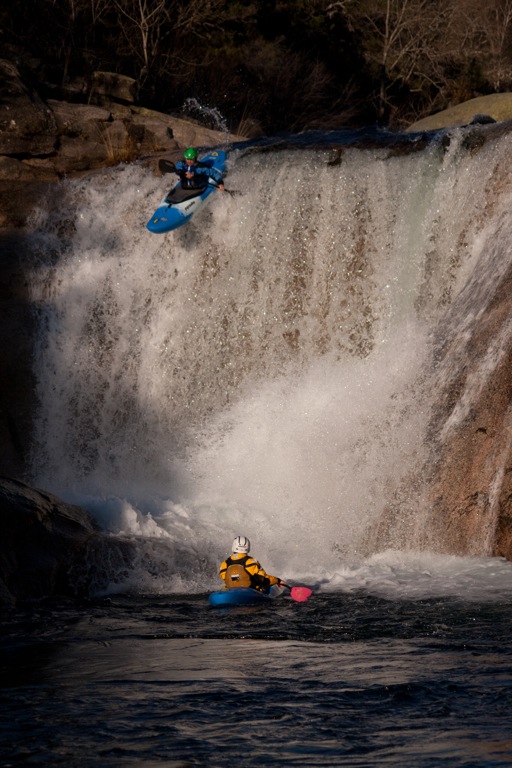
Pete Firth, Drop 1, Section 2, Castro Laborierio. Photo by Dan Butler
As we’re really feeling generous – a link to our Google map research: Â http://g.co/maps/ybb56
Keep your eye’s peeled for more information on the secret mission… coming soon!
The result of the mission: http://vimeo.com/35193539
(Edit: there is also a guidebook for Portuguese rivers: http://goo.gl/sBOIr)




